CMG Technologies, the UK’s leading Metal Injection Moulding (MIM) specialist, has successfully trademarked the term ‘CMG Technologies 3D Metal Moulding ®’ as part of the company’s efforts to raise awareness of the scope of opportunities offered by MIM.
Whilst more and more manufacturers are becoming familiar with the capabilities of 3D Metal Printing and Metal Additive Manufacturing, the process and benefits offered by Metal Injection Moulding are less well-known in the UK.
CMG’s Technical Sales and Marketing Director, Rachel Garrett, elaborates, “Although 3D printing has been around for more than 30 years, it is only in recent years that it has become widely recognised in the manufacturing industry.
“Previously known as SLA, or Stereolithography, the term ‘3D printing’ captured the attention of both industry and the general public and, we believe, coupled with significant developments in technology which reduced both the size and costs of 3D printing machines, played a vital role in the process gaining widespread understanding.”
CMG is hoping to replicate the success of this transition for metal injection moulding. MIM is still a relatively new industry and a significant number of companies that need to procure complex metal components may not be aware of its existence, let alone the savings they could make in terms of cost, lead times and environmental impact.
The phrase ‘3D metal moulding’ paints an immediate picture of what it is that CMG Technologies actually does, as Rachel explains, “Whilst the term metal injection moulding describes the process well, it is not always exactly clear what the outcome is – 3D parts moulded from metal. To those involved in this industry like we are, this sounds obvious, but to people unfamiliar with MIM hopefully, this term makes it easier to understand what we do.”
As well as looking at 3D printing from a branding perspective, the industry also provides opportunities for CMG Technologies to offer its services. Whilst 3D metal printing technologies are developing at an extraordinary rate, there are currently still limitations as to their capabilities.
It is still predominantly used for prototype production as the technology is not yet fast enough to cope with mass production, and at the moment 3D metal printing can only be used to produce components from a relatively small selection of materials.
This is where 3D metal moulding comes in – CMG Technologies’ Senior Engineers have more than 25 years’ experience in developing the MIM process and believe it could play a vital role for companies looking to take 3D metal printed prototypes to the mass market.
Rachel continues, “Rather than being seen as a competitor to 3D metal printing, MIM can actually provide the stepping stone needed between prototype and volume production. Once the initial tooling is complete we are able to deliver huge volumes of parts in a far wider variety of materials than is currently possible with 3D printing.”
3D metal moulding is perfect for producing parts with complex geometries – even the smallest parts can be perfectly replicated time and time again. CMG Technologies has the capability to manufacture a component with major dimensions of just 1.85mm x 1.60mm x 0.835mm with a 100µm hole and a small groove on one of the faces – at significantly lower costs than using traditional manufacturing methods.
“3D metal moulding is most effective for small, complex components in annual volumes of 1000 or more, although if the part is particularly complex and expensive the 3D moulding process could still be cost-effective for volumes of 500 or more. And because we mix our own feedstock, we have the in-house metallurgy capabilities to produce parts from a wide range of materials including titanium and precious metals. This makes our capabilities particularly attractive for manufacturing parts used in the aerospace and medical devices sectors,” says Rachel.
CMG facilitates the entire 3D moulding process in-house leading to reduced lead times – a significant factor for customers that need parts quickly.
Rachel concludes, “Innovation has been key to our success to date and we are extremely excited by the current developments in the UK’s manufacturing sector. The industry is a key driver of the country’s economy and we are proud to be able to support other manufacturers in ensuring the UK retains its global reputation as a manufacturing powerhouse.”
3D metal printing
As with Metal Injection Moulding, 3D metal printing uses powdered metals, an organic binding agent and a heating process to remove the binder. 3D printing builds components by delivering the powdered metal and binder in alternative layers through a nozzle controlled by computer, working to a CAD drawing. The initial process does not achieve the required strength so parts must go through a secondary process which involves fusing another type of metal into the shape.
There are currently two methods used in 3D metal printing; SLS – Selective Laser Sintering or Direct Metal Laser Sintering (DMLS) uses a laser to seal the powdered metal together into a hard object, and SLM – Selective Laser Melting which completely melts the powder forming a homogenous part. This process can only be used for single materials so is not suitable for alloys which limits its potential for a number of customers.
3D Metal Moulding or Metal Injection Moulding (MIM) – this process uses feedstock (metal powder mixed with organic binder) which can be bought ‘off the shelf’ or mixed in house by CMG’s experienced metallurgist to obtain the desired properties required by the customer.
A custom made tool is then fitted into a standard moulding machine and the feedstock is injection moulded into it to produce a net-shaped ‘Green’ component. The moulded ‘Green’ component is then transferred to the debind ovens to remove the binder.
The ‘Brown’ component then reaches the final stage of the process where it is sintered in a controlled atmosphere and any secondary processes can then take place.

